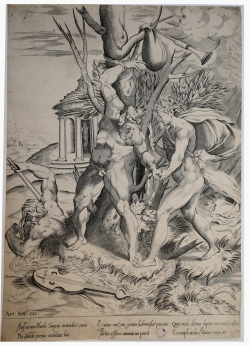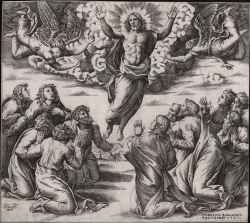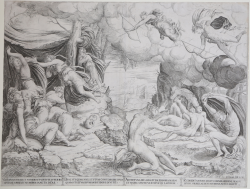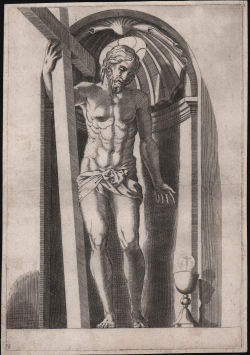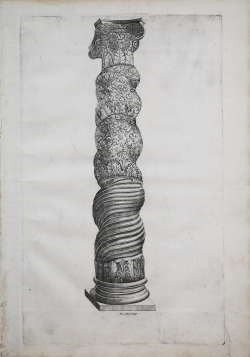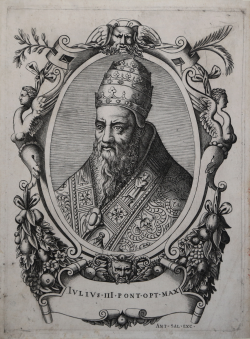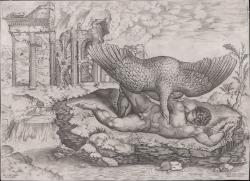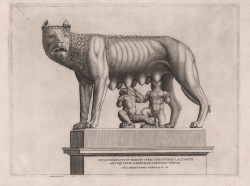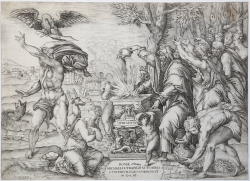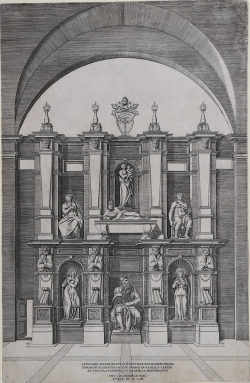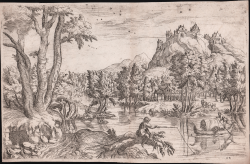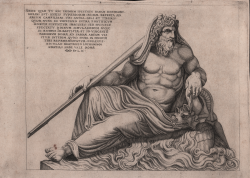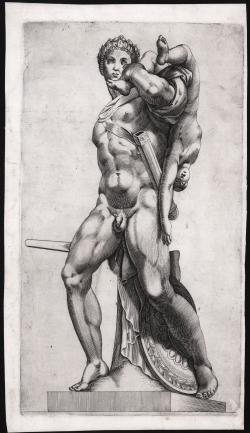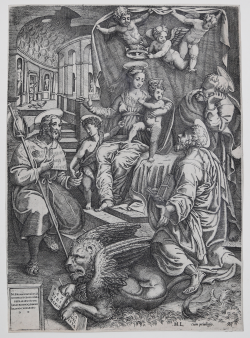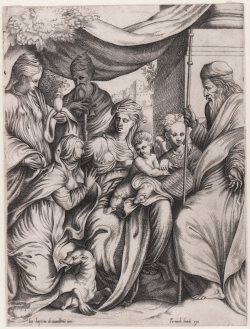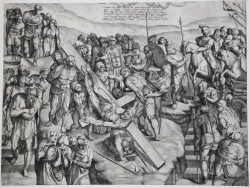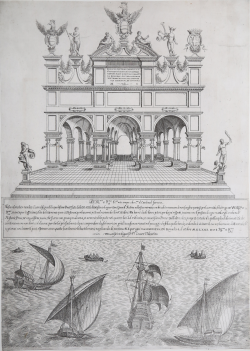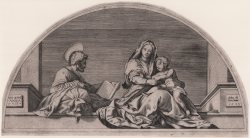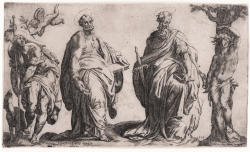The Ascension of Jesus Christ
Nicolas Beatrizet detto BEATRICETTO
Code:
S32762
Measures:
310 x 284 mm
Year:
1541
The Killing of Niobe's Children
Nicolas Beatrizet detto BEATRICETTO
Code:
S36156
Measures:
445 x 340 mm
Year:
1541
Christ with the Cross
Nicolas Beatrizet detto BEATRICETTO
Code:
S25406
Measures:
220 x 325 mm
Year:
1550 ca.
Grotesque Winding Column in St. Peter's
Nicolas Beatrizet detto BEATRICETTO
Code:
S48722
Measures:
285 x 465 mm
Year:
1550 ca.
Portrait of Pope Giulio III
Nicolas Beatrizet detto BEATRICETTO
Code:
S30496
Measures:
217 x 300 mm
Year:
1550 ca.
The Punishment of Tityus
Nicolas Beatrizet detto BEATRICETTO
Code:
S47113
Measures:
375 x 270 mm
Year:
1550 ca.
Lupae Romulum et Remum Urbis Conditores Lactantis Antiquum AC...
Nicolas Beatrizet detto BEATRICETTO
Code:
S29106
Measures:
345 x 260 mm
Year:
1552
Printed:
Rome
The Sacrifice of Iphigenia
Nicolas Beatrizet detto BEATRICETTO
Code:
S44711
Measures:
450 x 320 mm
Year:
1553
Tomb of Pope Julius II
Nicolas Beatrizet detto BEATRICETTO
Code:
S25307
Measures:
274 x 423 mm
Year:
1554
Statue of Ocean
Nicolas Beatrizet detto BEATRICETTO
Code:
S402020
Measures:
418 x 310 mm
Year:
1560
Printed:
Rome
Gladiator carrying the body of a dead child [Neoptolemos with the...
Cornelis BOS
Code:
S48469
Measures:
195 x 345 mm
Year:
1560 ca.
Madonna with Child and Saints
Giovanni Battista de’ CAVALIERI
Code:
S37764
Measures:
225 x 300 mm
Year:
1560 ca.
The Crucifixion of Saint Peter
Giovanni Battista de’ CAVALIERI
Code:
S38426
Measures:
560 x 440 mm
Year:
1567 ca.
Triumphal arch made by the city of Messina for the entry of Don...
Cesare VALENTINO
Code:
S48728
Measures:
395 x 555 mm
Year:
1571
The Saints Rocco, Peter, Paul and Sebastian
Orazio de SANTIS
Code:
S30470
Measures:
217 x 130 mm
Year:
1573

